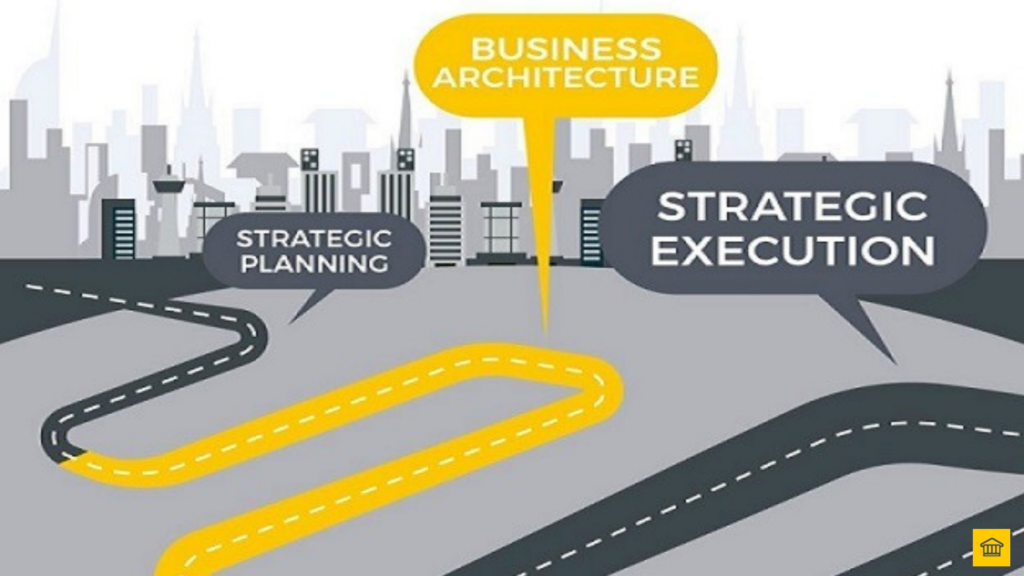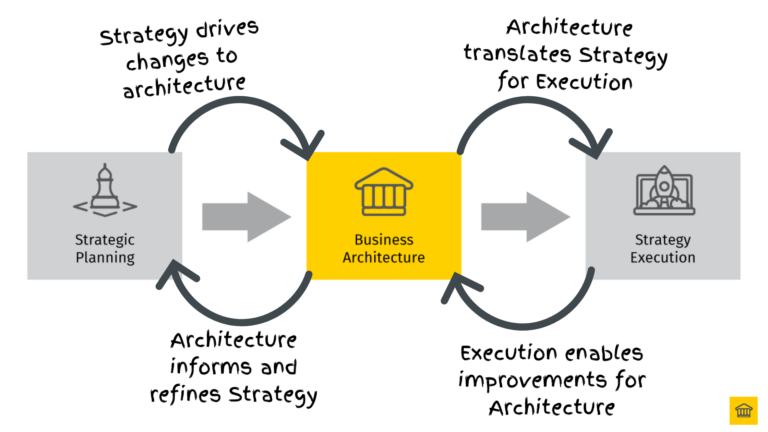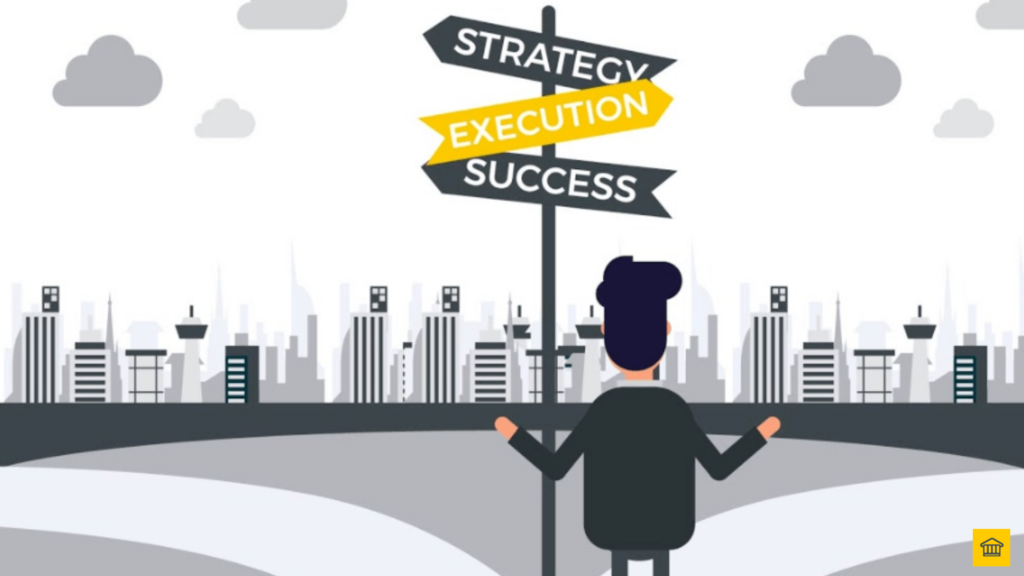Welcome to our exploration of the challenges faced in the realm of business architecture.
This blog post aims to provide a comprehensive understanding of the hurdles that organisations encounter when aligning their business architecture with their strategic objectives and tactical demands.
We will delve into the need for strong leadership, the importance of aligning business and architecture, and the necessity of automating siloed, manual, and partially digital business processes.
We will also discuss the contention between IT architecture targets and business goals, a challenge that can derail transitions and render target states obsolete if not properly addressed.
Here’s what we’ll cover (click on the links to skip to each section below):
NB – Click to expand images 📸
Join us as we navigate these challenges and discuss potential strategies to effectively integrate business architecture within the broader enterprise architecture, ensuring alignment with strategic business objectives and successful execution.
Lets start this post by defining business architecture
What is Business Architecture?
Business architecture refers to an organization’s framework. The Business Architecture Working Group of the Object Management Group (OMG), calls it “a blueprint of the enterprise that provides a common understanding of the organization and is used to align strategic objectives and tactical demands.” Here’s a visual that can help you understand it better:
To put it simply, business architecture enables strategic planning and strategic execution. And it used to align the businesses’ aims and objectives.

6-Steps to Business Transformation Success
WHAT THE TOP 30% OF ORGANISATIONS KNOW THAT YOU DON’T 👉

👏 "HOBA TECH is here to challenge the status quo and address the three problems in business transformation no one wants to talk about. Discover the tried and tested HOBA (House of Business Architecture) framework, design process, and blueprint. We reveal the secrets to transforming businesses, empowering thousands in over 13 countries to achieve their goals." 🌍🚀 #HOBA #BusinessTransformation
Heath Gascoigne Tweet
The Gap Between Business Architecture Strategy And Execution
About 80% of leaders feel the need to change their strategy in order to grow their organization. 44% have executed changes to these strategies to generate real value and remain competitive.
👏 "Our approach is the world's first and only business-led approach that addresses the biggest problems with Business and Digital Transformation today. HOBA is designed BY and FOR the Business in a language the Business can understand, providing the Business the ability to take back control of its Transformation from Technology and back into their own hands!" 💼🔄 #HOBA #BusinessLed #DigitalTransformation
Heath Gascoigne Tweet
But implementing business architecture that enables those changes is a lot harder than it sounds.
In fact, 70% of enterprises fail to integrate business architecture into their projects and initiatives. And 80% of organisations have clearly defined strategies but have difficulty in executing them.

👏 "Crafting and implementing a robust business architecture thrives on the synergy of collective collaboration. It demands the active involvement and input of every team member to truly flourish." 🤝💼 #BusinessArchitecture #CollaborativeSuccess #TeamSynergy #InnovateTogether
Heath Gascoigne Tweet
What Is The Problem With Business Architecture?
Here’s why business architecture is difficult to implement:
Challenges with collaboration
Designing and implementing a business architecture requires collaboration from every member.
Failure to Communicate
But it’s difficult to get everyone inside the room and sell an idea.
Enterprises think that stakeholders and key players are not part of designing the business architecture. In a top-down enterprise, communication within every tier is important. All stakeholders and key players need to be aware of the business architecture, otherwise it will meet resistance and lead to failure.
Ideal Team
Finding people with the appropriate skills is a must. Businesses will perform better with the right skill and the right people in the right place.
Technical Governance
The alignment of business strategy, objectives, infrastructure, collective tools and processes is vital but not easy. Security and division of data or duty are also a high priority.
The Customer
The final result of the business architecture depends on the customer’s wants. After all, if the business architecture does not suit the customer, it would fail to get their loyalty and interest.
Unfortunately, most business architects don’t consider the customer when building their business solutions.
When this happens, the enterprise will likely not to succeed.
What Are Solutions To Improve Business Architecture?
The problems above can be solved through:
- Creating an environment where everybody will be involved in the decision-making processes.
- Considering the customer’s wants and needs.
- Making security and data control a high priority.
- Implementing measures to determine the strategy’s progress. This way, if a loophole has been detected, corrections can be made immediately.
- Having a clear vision. All stakeholders must understand the businesses’ goal and should be updated with the latest developments regardless of their hierarchy in the organisation.
Looking for the Best Training to deliver your Business Transformation? Search no more!
- 30-Day Money-Back Guarantee
- Risk FREE

👏 "The ultimate outcome of a business architecture hinges on understanding and fulfilling the customer's needs. Failing to align with customer expectations jeopardizes loyalty and engagement, rendering the architecture ineffective." 🎯🌟 #CustomerCentric #BusinessArchitecture #CustomerSatisfaction #LoyaltyMatters
Heath Gascoigne Tweet
Conclusion
In conclusion, the Business Architecture Challenge is a multifaceted issue that requires a comprehensive understanding of an organization’s framework and strategic objectives. It involves aligning the business’s aims and objectives, solving real business challenges, and automating siloed, manual, and partially digital business processes.
This blog post has explored these challenges in depth, highlighting the need for enterprise architects to have an in-depth knowledge of the business and its customers. We’ve also discussed the potential pitfalls of a technology bias and the importance of focusing on the business to ensure that enterprise architects are effectively addressing business challenges.
Moreover, we’ve touched on the challenges faced by the architecture, engineering, and construction (AEC) industry, emphasizing the importance of a research-based understanding of the marketplace to maintain a competitive edge.
However, the challenges faced by business architects are interrelated and often require a multifaceted approach for resolution. This includes securing adequate funding, creating a compelling value proposition, and ensuring the right skills and capabilities are in place.
Wrap Up
Thank you for joining us on this exploration of ‘What is the Business Architecture Challenge?’. If you’re interested in learning more about how to navigate these challenges, or if you have any further questions, we invite you to learn more about HOBA Tech or contact us to discuss how we can help.
Remember, at HOBA Tech, we’re more than just a technology company; we’re your partners in navigating the complex landscape of business architecture and IT strategy.
Thank you for reading this!
Sincerely,

Heath Gascoigne
P.S. Many organisations fail to recognise these problems with their business architecture and take the necessary actions to solve them.
Remember: It’s always important to bridge the gap between strategy and execution.
P.P.S. If you want to learn more about business transformation, check out The Business Transformation Playbook or download the free preview here.
For more information, visit https://hoba.tech















